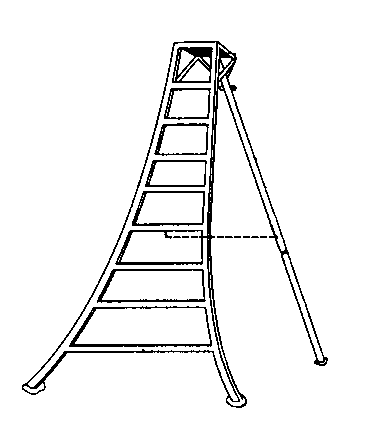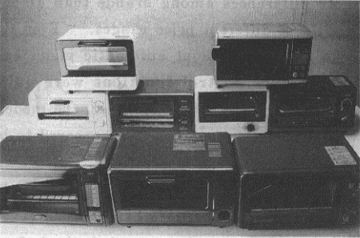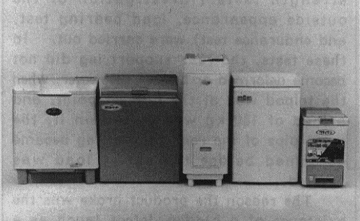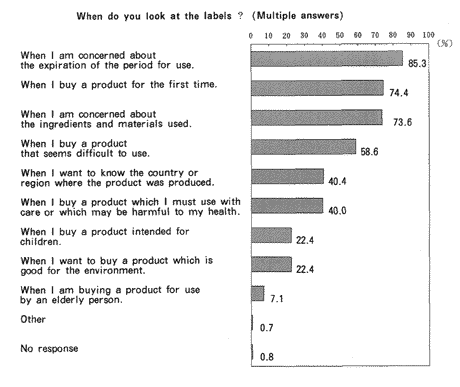NCAC NEWS(Vol.8,No.1)
INDEX
- Reflecting on the First Year of the PL Law
- Results of Product Test
- Survey of Trends in People's Livelihood
CONTENTS
REFLECTIG ON THE FIRST YEAR OF THE PL LAW
One year has passed after the Product Liability (PL) Law took effect on July 1, 1995. We would like to report briefly on the activities of Japan Consumer Information Center (NCAC) related to the PL Law in the past year.
Somewhat more than 7,000 complaints, inquiries and requests for consultation are brought to NCAC each year. Most are solved through consultations and responses provided by consumer counselors. However, there are an increasing number of cases that involve damage caused by a product or service, which claim damage compensation for lost benefits and consolation money. These require sophisticated legal advice and judgment of an attorney.
Up to now, NCAC has provided specific consumer advice services by specialists such as attorney or architect. However, these servises cannot always solve such cases. Therefore, on October 1, 1995, NCAC established a specialized committee to offer advice on consumer complaints. The purpose of this committee is to offer specialized and effective advice on consumer complaints.
This committee consists of twelve specialists in various fields including law, chemicals, and machinery, and provides advice to NCAC chairman, on questions put forward by the chairman. However, no cases have been examined by this committee.
The number of cases on hazards (cases where a product or service causes consumer injury) collected from local consumer centers across the country through the NCAC Hazard Information System increased from the year before.
To handle complaints related to product accidents, it is important to carry out tests to find out the causes of the accidents as well as to have an effective system for consultation and solution as mentioned above.
NCAC's product testing department carries out tests on products on those product accidents requested for the test to find causes, among all the complaints on product accidents brought to NCAC and local consumer centers across the country.
Both the number of requests for such product tests and the number of tests actually carried out have increased in the past three years(Table 1). In FY 1995, there were two requests for tests related to accidents resulting in death.
When we look at the number of request for tests that were received by product classification, the largest proportion (34cases) related to "vehicles, transportation equipment" including automobiles(Table 2).
Table 1.
| FY | No. of cases | |
|---|---|---|
| received | implemented | |
| 1993 | 29 | 33 |
| 1994 | 54 | 54 |
| 1995 | 83 | 70 |
- Because some of the test requests accepted in earlier year are carried out in later years, the total number of tests carried out may be larger than the numberof test requests accepted.
Table 2.
| product type | No. of cases | |
|---|---|---|
| received | implemented | |
| Total | 83 | 70 |
| Food products | 4 | 2 |
| Household products | 20 | 20 |
| Light, heat and water-related products | 1 | 1 |
| Clothings | 2 | 2 |
| Health and sanitary products | 5 | 7 |
| Cultural & entertainment products | 11 | 11 |
| Vehicles, transportation equipment | 34 | 24 |
| Land, building, equipment | 6 | 3 |
| Other products | 0 | 0 |
As for the content of accidents, in the case of automobiles, they included: damage to parts (10 cases), fires (5 cases), tire bursting(3 cases), sudden starting or brake failure (3 cases). In the area of household electrical appliances, there were smoke emission (3 cases), overheating (3 cases), fire (2 cases), and sudden ignition (1 case).
The results of the tests are distributed to local consumer centers as a monthly report, and printed in NCAC publications to inform as many consumers as possible. Also, when there is a particularly urgent need to call for consumers' attention and caution, we publish the information in our monthly magazine called "Tashikana Me" (Critical Eyes) which specializes in information on product tests. A number of cases recently described in the magazine are introduced below.
Vinyl children's slide (air-filled)(August 21, 1995)
- Reason for the test request:
- A two-year old child fell from a slide andbroke her right leg. The user noticed that air was leaking gradually from the air stopper and it appeared to be dangerous. This accident occurred inthe following way. The air for the pipe support on the lower right side leaked and the slide became unstable and turned over. The child fell off from the slide and suffered a broken bone. The request to us was toinvestigate the degree of air leakage from this slide and its stability.
- Test results:
- The test could not confirm air leakage from the lower right part. There were also no abnormal air leaks from other parts. However,depending upon how a child plays with it, it tends to become unstable. Wecan say that this slide lacks adequate attention to safety as a toy which children are certain to play with in all sorts of ways.
Automobile door lock (May 30, 1995)
- Reason for the test request:
- Whiledriving a car, the automatic theft-prevention device activated even though the driver was in the car,so that he could not unlock the car door. He requested that the cause of this accident be investigated
- Test results:
- There were two factors that led to this accident. First, even though a person was in the car, information that the car was locked from outside was transmitted, activating the theft prevention device. Second, the fuse in the wire which transmits turning ON of the ignition switch to the center locking device was disconnected. These two factors are assumedto have worked.
Folding tripod type step-ladder(September 28, 1993)
- Reason for the test request:
- While pruning a tree in a garden, the leg of a step-latter broke off and a man fell off from a height of 2.5 meters, and broke his thigh. The request was to investigate the strength of this model.
- Test results:
- The product is a tripod-like step-ladder which employs a long ladder supported by one leg in the back.(figure) By changing the length of the rear support leg, the height of the step ladder is adjusted. The rear support leg consists of an outer pipe and inner pipe. The inner pipe has ten holes for inserting the adjustment pin that adjusts the length. With this product, the pole broke at the second hole from the bottom. In NCAC test, the situation that existed at the time of the accident was recreated with the same model, and strength tests (investigation of the outside appearance, load bearing test, and endurance test) were carried out.In these tests, the rear support leg did not become deformed or break. However, when the tripod was at the highest point, and a load of 180 kg was placed on it, the inner pipe of the rear support leg became deformed before the entire load was applied. The reason the product broke was the existence of a hidden defect (such as a crack) near the hole.

RESULTS OF PRODUCT TESTS
OVEN TOASTER
Some of the oven toasters released recently have functions such as an automatic menu function which enables the user to cook dishes automatically by just pressing a menu key, and a function for controlling the temperature. However, there have been cases where the user was burned while using such oven toasters and there is a concern about safety. This time we purchased five brands of low-priced models costing about ¥5,000, and four brands of more expensive models priced at around ¥15,000 to carry out the tests.

Safety
Ahead of the tests, we carried out an opinion survey on the use of oven toasters by consumers in cooperation with local consumer centers at 30 locations across the country. We found that 14% of persons who own an oven toaster had been burned when using it, while 8% had experienced smoke emission or another. We investigated the temperature of oven toasters in use and found that the highest temperature was at the glass window (163-293°C), which is hot enough to burn a user who touches.The top panel, bottom panel, and back surface were also very hot, although the temperature varied with the brand.
With many models, the handle for the door is placed on the upper part of the door. Such a handle can easily become hot due to heat discharged from the glass sheet between 52 and 69 °C the brands tested. Thus, some brands were very close to the maximum allowed by the JIS standard (70°C), With the more expensive types, the handle was placed on the left side of the door, away from the main part of the oven, making it possible to use it with greater safety. The temperature on two such handles was 42°C and 47°C.
Cooking function
Ten monitors used oven toasters to make toast, cook "mochi" (rice cake), frozen gratin, frozen pizza, and frozen rice balls ("onigiri") and tasted to see how the cooked foods came out.
As for toasting regular bread, there were more differences among brands than among models of different price ranges. Even the oven toasters without automatic menu and temperature control functions were quite adequate for the job. However, the models with automatic menu function appeared to be better for preparing frozen foods.
When frozen foods are to be cooked, the dishes came out better when the use rused aluminum foil, turned or moved the food often, and did other needed tasks. With regard to the automatic menu function,this should be thought of as a function for maintaining an appropriate temperature.
Usability
With six out of nine brands, the holding (receptacle) dish became disfigured in use. The disfiguring of the dish not only affected the quality of the cooked food but also sometimes caused the food to spill out.
Advice to consumers
As we saw in the results of the questionnaire survey, many persons experienced burns, smoke emission and fires. When you put in or take out the food, you should use a pair of cooking gloves and take care not to get burned. If you continue to use the equipment without cleaning out the bits and crumbs of food left over from cooking, it can cause odor or even fire. It is therefore better to choose a model which is easier to clean out, and place it in a safe place where small children cannot reach it, heat does not accumulate, and there are no combustible items nearby.
HOME GARBAGE DISPOSALS
We tested home garbage disposals that can dispose of kitchen garbage. We selected four brands which dissolve garbage with micro-organisms to reduce volume and weight, and one type that uses warm air to dry the garbage and there-by reduce the volume and weight. We tested them in the winter. (The test for summer is now under way.)

Effectiveness in reducing garbage volume
The monitor loaded 1 kg of kitchen garbage once a day and measured the weight after one month. The findings are that a reduction rate of 89% of weight was the highest while 64% was the least. The contents in the models with a high rate of weight reduction at this point could be scooped with a dry, swishy feeling, while the contents in the models with a low weight reduction rate felt rather sticky and watery.
Usability
Even when you have the cover on, some odor is inevitable given the structure of these products. However, perhaps because the test was conducted during the winter, the odor was not particularly disturbing as long as the equipment was outdoors. Overall, these products generated less odor than the conventional compost equipment, but the odor was stronger with the products that had a lower rate of weight reduction. With the warm-air blow type, there was only the kind of odor you get when you overcook food a little, which caused only a little discomfort.
The operating noise was at the level of most air-conditioners, so even indoor use was not that disturbing.
Economy
The equipment itself cost between 100,000[yen] and 150,000[yen]. In terms of herunning cost of the micro-organism type, in addition to the cost of electricity,it is necessary to replace the base material chip that contain micro-organisms and wood chips at regular intervals. On the average, this costs between 1,000[yen] and 2,000[yen] per month.
It turns out that these home garbage disposals actually require a considerable amount of electricity and running costs, even though they have an image of "environment protection and energy conservation."
Advice to consumers
Compared to the conventional type of compost, these home garbage disposals incur greater running costs, but they are effective in reducing the weight of garbage and are convenient to use. When you think about using this kind of a prdocut, you should pay attention to the following three points.
- Can you secure an appropriate space for setting it up and an outdoor power source?
- As for the micro-organism type, it is necessary to replace the basic material regularly, so, you should check whether or not it is easy to obtain this regularly.
- Read the handling instructions to find out which items you cannot put in and check the points for attention when you load garbage.
THE 26th SURVEY OF TRENDS IN PEOPLE'S LIVELIHOOD
NCAC carries out a survey of trends in consumer living to study the actual behavior and awareness of housewives each year. The 26th survey was carried out in September, 1995.
We conducted a questionnaire survey with 3,000 housewives between 20 and 69 years of age who live in the specially designated cities and 23 wards of Tokyo. We obtained 2,166 responses, which represents a response rate of 72.2%.
This time, we investigated the following items.
1. Dissatisfaction and damage from products and services
In the survey, 43.4% of respondents had been dissatisfied with the products and services they purchased or used during the past year or suffered economic or physical damage.
Of all products and services, the object of dissatisfaction and complaints of damage were (in order of frequency): food products (11.9%), clothes and personal items (10.2%), cleaning (9.4%), and electrical appliances (6.6%).
Of the respondents, 48.1% had filed complaints of dissatisfaction and damage.
2. Awareness and use of NCAC and local consumer centers
Another finding was that 29.4% of respondents said that "I know about NCAC" and 77.8% said that "I know about local consumer centers."
Also, 3.2% of respondents surveyed had used NCAC or local consumer centers. Of these, the purposes for use included for counseling or information (47.8%) and participation in training sessions or lectures (18.8%).
3. On the extent of consumer awareness regarding the cooling-off system & PL Law
Some 74.7% of the respondents said that they have heard the term "cooling-off system", but only 8.1% of all respondents said that they have a good understanding of the conditions under which the cooling-off system can be used to cancel the contract.
With regard to the PL Law, only 2.0% said that they know the contents of the law well, while 18.6% said that they know the content of the law to some extent, and 61.9% said that they have heard of the law through the mass media, but do not really know the content of the law. Some 15.7% said that they have not heard about it at all.
4. Consumer awareness regarding safety and warning labels
Some 31.7% of respondents surveyed said that they look at the label carefully when they buy a product.
When asked "When do you look at the label?," 85.3%, the largest group, answered they do so "When I am concerned about the expiration of the period for use." (See the graph.)
In terms of requests for safety labels, we asked consumers what kind of labels they need to prevent accidents caused by products. The items with a high incidence of the strongest level of request ("I definitely want to have this,")included the following:"What we should not do (prohibited items) should be written in large letters (79.2%)," "I want potential hazards to be clearly indicated (such as poisoning, burns, or ignition)(63.9%)," "I want the maker to indicate the telephone number for service so that to I can inquire and receive advice when I have some problem (62.0%)", "I want to have the prohibited items and caution items indicated at the very beginning (60.0%)." On the other hand, only 40.7% said "I want to have as much explanation in the label as possible because I don't want any accident to occur."

We asked a question "When do you look at the label?" to consumers and made a graph of their answers. The largest group, 85.3% of customers answered they do so "When I am concerned about the expiration of the period for use". 74.4% of respondents answered "When I buy a product for the first time". 73.6% of respondents answered "When I am concerned about the ingredients and materials used". 58.6% of respondents answered "When I buy a product that seems difficult to use". 40.4% of respondents answered "When I want to know the country or region where the product was produced". 40.0% of respondents answered "When I buy a product which I must use with care or which may be harmful to my health". 22.4% of respondents answered "When I buy a product intended for children". 22.4% of respondents answered "When I want to buy a product which is good for environment". 7.1% of respondents answered "When I am buying a product for use by an elderly person". 0.7% of respondents said other answers. 0.8% of respondents had no response.
